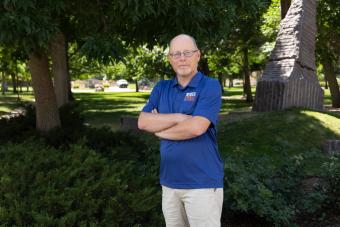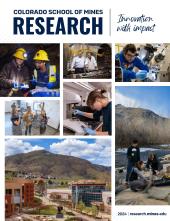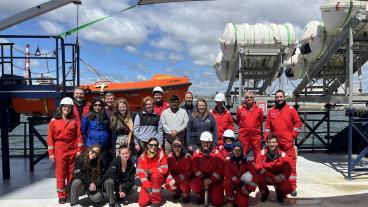Mines professor assessing role of metals markets in energy transition
Ian Lange leads federal subcommittee to examine role of critical metals in transitional energy sources


Critical minerals — the metals and other raw materials essential for clean energy technologies — and their future economic impact are a hot topic these days.
But you don’t have to tell Ian Lange that. The director of Mines’ Mineral and Energy Economics Program has been in high demand in recent months for his expertise on the economics of copper, lithium, cobalt and other minerals, consulting with the U.S. Departments of Commerce, State, Energy, Defense and more.
In 2023, Lange was asked by the U.S. Commodity Futures Trading Commission to chair a federal subcommittee on the role of metal markets in the energy transition. An independent agency of the U.S. government, the CFTC regulates the U.S. derivatives markets. Lange is leading a team of stakeholders to examine the role of critical metals in transitional energy sources and their potential impact on derivatives markets as part of the CFTC Energy and Environmental Markets Advisory Committee.
Here, Lange answers a few questions about the subcommittee and the importance of metal markets in the energy transition.
Q: Why is the CFTC interested in critical mineral markets?
Ian Lange: Everybody in the federal government is eager to start getting things done, see dirt moving and investment happening. Everyone is trying to figure out how to make mines happen and how to make the U.S. more of a leader in the mineral sector as opposed to just a purchaser of already made mineral products, but they’re all hearing that it’s really hard for investors, for companies, for downstream buyers to understand what the prices are going to be and what demand is going to look like. That’s the crux of a lot of the conversations over the last six months and a main culprit of the delay in investment: What can be done to improve that transparency?
That’s where the Commodity Futures Trading Commission comes in—they regulate futures exchanges, like the Chicago Mercantile Exchange and theNew York Mercantile Exchange. What you’re trading in a futures market is delivery of a product or potential delivery of a product at a future point in time so that people can get a sense of what the price of oil or corn or copper will be in two months, six months, 12 months down the road. The commission writes policies or suggested rules to ensure these markets are operating correctly. They can also take enforcement action if people are found to be trying to do something anti-competitive.
Q: Why is there so much uncertainty about these markets?
Lange: Partially, it’s because they’re so new. Lithium and cobalt are newer markets — before 2018, the demand for these minerals was so small that it wouldn’t make sense to have a futures market. That’s what’s happening right now with other critical minerals—with gallium or tellurium, you can’t currently support an organized futures market because there are so few people wanting to trade. If you want to have a functioning market, what you need is good information availability, you need people to be able to understand what’s going on, to make predictions of future prices. In a really small market, like the gallium market, there are only a couple of producers and that makes it really easy for someone to take advantage of the information they have that nobody else does.
Q: How is the subcommittee you’re chairing supporting the CFTC as it approaches this challenge?
Lange: The CFTC has an Environment and Energy Markets Advisory Committee, and one of the commissioners was looking for help understanding more about mineral markets. They have a number of people who deal in energy and risk but don’t have a lot of people who deal with minerals. So, they set up a subcommittee to help write a report, and that’s where they found me. Our charge broadly is to define the issue and help them understand where they might want to make suggestions or change things from a policy perspective. The whole committee held a meeting on campus in 2024, and we had a small panel to discuss market issues with myself,Nicole Smith in Mining Engineering, two students in the Mineral and Energy Economics Program and an alum of the program. We were able to provide the committee a little more understanding of the current state of the market and what the concerns are. Does this have parallels to other commodities? What are people thinking about?
Q: More broadly, why do you think Mines has become a leader in the conversations about critical minerals?
Lange: Mines has the only Mineral and Energy Economics Program in the United States, and after 55 years of educating mineral economists, we have alumni at all different stages of their careers throughout the mineral supply chain. Eventually, all the dots got connected, and everyone got pointed toward Mines. Twenty years ago, or even 10 years ago, this wasn’t a topic that a lot of people were turning their attention to. What’s exciting is that people are realizing that since Mines has such a long history of expertise in the area and has alumni and friends all over the industry, we can provide a much fuller picture of what’s going on.




